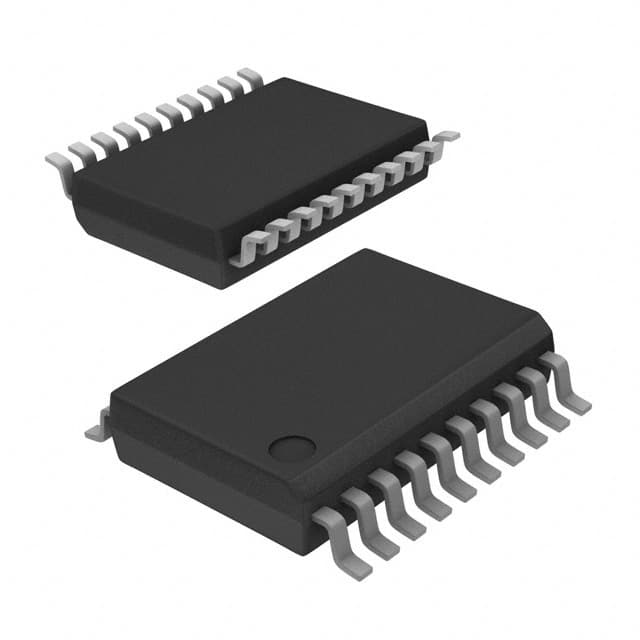Xem thông số kỹ thuật để biết chi tiết sản phẩm.

Encyclopedia Entry: 74ACT245MSA
Product Overview
Category
The 74ACT245MSA belongs to the category of integrated circuits (ICs) and specifically falls under the family of bus transceivers.
Use
This IC is commonly used for bidirectional data transfer between two buses with different voltage levels. It acts as a buffer, allowing seamless communication between systems operating at different voltage levels.
Characteristics
- Bidirectional data transfer
- Voltage level translation
- High-speed operation
- Low power consumption
- Wide operating temperature range
Package
The 74ACT245MSA is available in a small outline integrated circuit (SOIC) package. This package offers compactness and ease of integration into various electronic systems.
Essence
The essence of the 74ACT245MSA lies in its ability to facilitate efficient and reliable data transfer between buses operating at different voltage levels.
Packaging/Quantity
The IC is typically packaged in reels or tubes, containing a specific quantity of units per package. The exact packaging and quantity may vary depending on the manufacturer.
Specifications
- Supply Voltage: 2.0V - 6.0V
- Operating Temperature Range: -40°C to +85°C
- Input/Output Compatibility: TTL/CMOS
- Maximum Data Rate: 120MHz
- Number of Channels: 8
Detailed Pin Configuration
The 74ACT245MSA features a dual in-line package (DIP) with a total of 20 pins. The pin configuration is as follows:
- OE (Output Enable) 1
- A1 (Data Bus A) 1
- A2 (Data Bus A) 2
- A3 (Data Bus A) 3
- A4 (Data Bus A) 4
- A5 (Data Bus A) 5
- A6 (Data Bus A) 6
- A7 (Data Bus A) 7
- GND (Ground)
- B7 (Data Bus B) 7
- B6 (Data Bus B) 6
- B5 (Data Bus B) 5
- B4 (Data Bus B) 4
- B3 (Data Bus B) 3
- B2 (Data Bus B) 2
- B1 (Data Bus B) 1
- VCC (Supply Voltage)
- DIR (Direction Control)
- OE (Output Enable) 2
- NC (No Connection)
Functional Features
- Bidirectional data transfer between two buses with different voltage levels
- Automatic direction control based on the DIR pin
- Output enable/disable functionality for bus isolation
- TTL/CMOS compatible inputs and outputs
- High-speed operation for efficient data transfer
- Low power consumption for energy efficiency
Advantages and Disadvantages
Advantages
- Facilitates seamless communication between systems operating at different voltage levels
- Provides bidirectional data transfer capability
- Offers automatic direction control and output enable/disable functionality
- Supports high-speed operation
- Low power consumption enhances energy efficiency
Disadvantages
- Limited to a maximum data rate of 120MHz
- Requires careful consideration of voltage compatibility with connected systems
Working Principles
The 74ACT245MSA operates by receiving data from one bus and transmitting it to another, while simultaneously translating the voltage levels between the two buses. The direction of data flow is controlled by the DIR pin. When enabled, the IC allows bidirectional data transfer, and when disabled, it isolates the buses.
Detailed Application Field Plans
The 74ACT245MSA finds applications in various fields where data transfer between buses with different voltage levels is required. Some specific application areas include:
- Industrial automation systems
- Automotive electronics
- Communication equipment
- Consumer electronics
- Medical devices
Detailed and Complete Alternative Models
- 74HCT245: Similar functionality, but operates at a lower voltage range (4.5V - 5.5V)
- SN74LVC245A: Offers similar bidirectional data transfer, but with lower power consumption
- CD74HC245: Provides comparable voltage level translation capabilities, but with a different pin configuration
These alternative models can be considered based on specific requirements and compatibility with the target system.
In conclusion, the 74ACT245MSA is a versatile bus transceiver IC that enables efficient data transfer between buses operating at different voltage levels. Its bidirectional capability, automatic direction control, and low power consumption make it suitable for various applications in different industries.
Liệt kê 10 câu hỏi và câu trả lời thường gặp liên quan đến ứng dụng 74ACT245MSA trong giải pháp kỹ thuật
Sure! Here are 10 common questions and answers related to the application of 74ACT245MSA in technical solutions:
Question: What is the purpose of the 74ACT245MSA?
Answer: The 74ACT245MSA is an octal bus transceiver that facilitates bidirectional data transfer between two buses.Question: What voltage levels does the 74ACT245MSA support?
Answer: The 74ACT245MSA supports a wide range of voltage levels, typically from 2V to 5.5V.Question: Can the 74ACT245MSA be used for level shifting?
Answer: Yes, the 74ACT245MSA can be used for level shifting as it supports different voltage levels on its input and output sides.Question: How many data lines can the 74ACT245MSA handle?
Answer: The 74ACT245MSA can handle up to 8 bidirectional data lines.Question: Is the 74ACT245MSA suitable for high-speed applications?
Answer: Yes, the 74ACT245MSA is designed for high-speed operation and can handle data rates up to several hundred megahertz.Question: Can the 74ACT245MSA be used in both parallel and serial communication systems?
Answer: Yes, the 74ACT245MSA can be used in both parallel and serial communication systems, depending on the application requirements.Question: Does the 74ACT245MSA have any built-in protection features?
Answer: Yes, the 74ACT245MSA has built-in ESD protection diodes to safeguard against electrostatic discharge.Question: Can the 74ACT245MSA be cascaded to increase the number of data lines?
Answer: Yes, multiple 74ACT245MSA devices can be cascaded to increase the number of bidirectional data lines.Question: What is the power supply voltage range for the 74ACT245MSA?
Answer: The 74ACT245MSA typically operates with a power supply voltage range of 4.5V to 5.5V.Question: Are there any specific timing considerations when using the 74ACT245MSA?
Answer: Yes, the 74ACT245MSA has specific setup and hold time requirements that need to be considered for proper operation in a given system.
Please note that these answers are general and may vary depending on the specific application and datasheet specifications of the 74ACT245MSA.

